Table of Contents
Last Updated on April 2, 2024
A bed sheet is the essential bedding item we use. A high-quality bed sheet not only brings you comfortable touch but also impacts your health. A sticky and unbreathable bed sheet will bring nightmares for hot sleepers and cause significant health issues due to the lack of quality sleep in the long run. Knowing more about the bedsheet will help you to make the right purchase decision.
A myth on the bedsheet circulated extensively is “the more thread counts, the better quality it has.” It is not always correct because you need to consider the yarn quality.
Thread Count Is Not Everything
Thread count refers to the number of horizontal and vertical threads per square inch. Generally, the higher the line count, the softer the sheet will become softer over time. Good sheets range from 200 to 800 thread counts but do not exceed 1000. A low thread count is not necessary to be a low-quality sheet. With more techniques engaged in the fabric treatment by chemicals, some lower thread count sheets give a good performance. If you opt for a lower thread count sheet, look for high-standard industrial certification on their treatment processes for chemical safety, such as OEKO-TEX®.
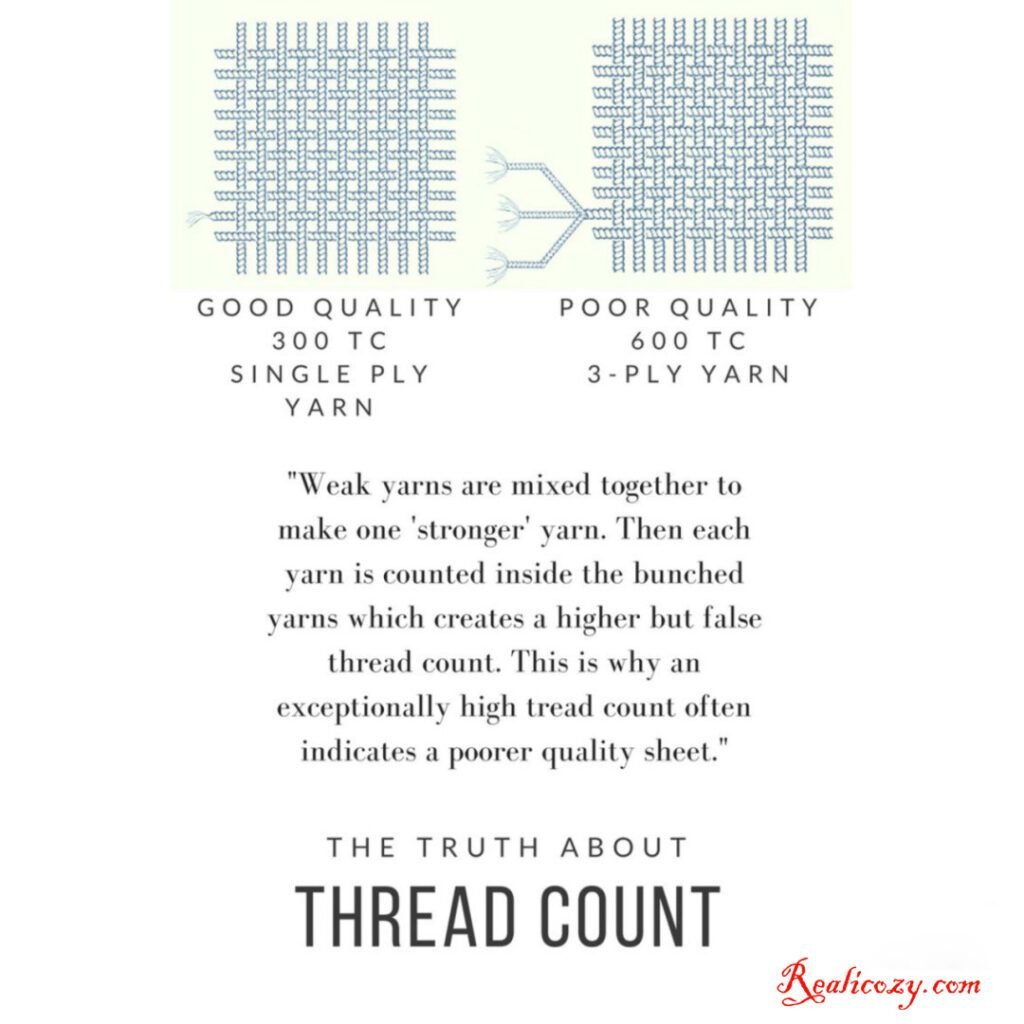
A higher number of threads per inch usually means each yarn is finer; it creates a smooth yet strong weave.
However, exceptionally high thread counts don’t necessarily mean the sheet is better — Inflating the thread count by twisting multiple yarns together creates false thread counts, which don’t improve the feel of the fabric and may even denigrate its quality.
Know the Fabrics of Your Bed Sheet
There are many different fabrics made from various fibers, either natural or man-made. Different fibers are spun into yarns and weaved into different patterns. As a result, countless fabrics are presented in front of us. Understanding the fabric materials in the label attached to the bedding sheets will help you sift through many sheets and get the preferential one out of loads of choice.
Cotton

It is the most common material in bedsheets -100% cotton or combined with other materials. The most outstanding features of cotton are durable and breathable, attributed to its long staple. Staple refers to the length of each cotton fiber. A longer staple has a significant stake in rendering a smoother, stronger, and more flexible fabric. Long-staple fibers measure about 1⅛ to 1¼ inch, while extra-long staple fibers are 1⅜ inch. There are several different types of cotton, and the most notable are:
- Egyptian cotton is well-known for its extra-long staple, from which the softest and smoothest fabric is produced. Egypt is one of a handful of countries that grow an exceptionally lustrous type of cotton called extra-long-staple cotton, known in the U.S. as Pima cotton. Extra-long-staple varieties make up three percent of the world’s cotton production. Simply appending the origin “Egyptian” doesn’t guarantee the cotton quality, as some manufacturers attach this label to their products made from short-staple fibers. The best way to assure your product quality is to go for production verification.
- Pima cotton enjoys the same reputation as “Egyptian Cotton.” Its extra-long fibers offer exceptional quality and are ideal for the bedsheet. This cotton is primarily grown in the United States. Pima cotton has a tracking system to ensure product authenticity.
- Upland Cotton comprises 90% of the world’s cotton production. Its relatively short cotton fibers characterize it. It is the most commonly grown cotton worldwide due to the tremendous demand for everyday products at affordable prices. The typical fabric made from upland cotton is denim jeans and flannel clothing, which are soft and strong, but low maintenance.
Combed Cotton
Combed Cotton is Cotton but with an additional manufacturing process. Fine brushes remove any impurities and short fibers to make combed cotton. Combed cotton has a higher quality and is more expensive and luxurious than regular cotton. Thanks to its processing method — only long and straight fibers remain; combed cotton is less fraying and unraveling and, in the meantime, softer. A combed cotton bed sheet is expensive and luxurious, and it is better to wash it before use to make it softer and more comfortable.
Linen
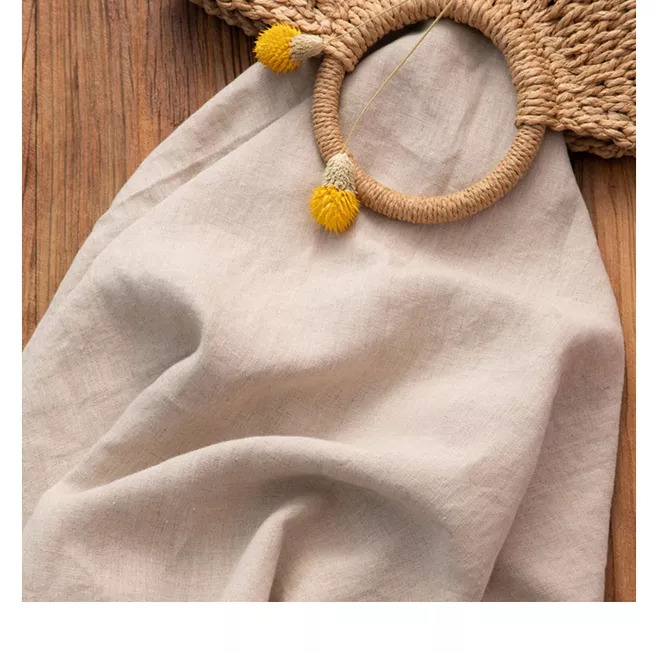
Linen fabric is from the flax plant. It has a rougher and nubby texture. It is two or three times stronger than cotton and has wick-moisture and heat properties. Because it is a good conductor of warmth, it is very popular to make for the bedsheet in summer. Linen fabric is naturally anti-bacterial and easily wrinkled. Its strong fiber results in good durability and best suits a bottom sheet. Because the material’s fibers are much thicker than cotton, the number of threads per square inch is less than in cotton. That is why you should look for a thread count between 80-120. A high-quality linen bedsheet could be very expensive.
Silk
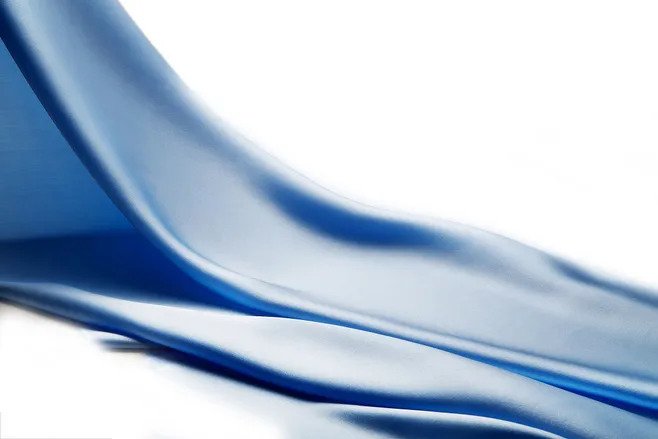
Silk is made from the cocoons of silkworms, which are separated into continuous strands and woven into fabric. Silk bed sheets are lustrous. Unlike other synthetic materials, such as “satin,” it owns a superior sheen but is not slippery and doesn’t catch on dry skin or cause frizzy hair. Even though silk has a smooth sheen, it is not very breathable and is a bit hot with clingy properties. A silk bedsheet could be expensive but not durable compared to other bedsheets.
Eucalyptus
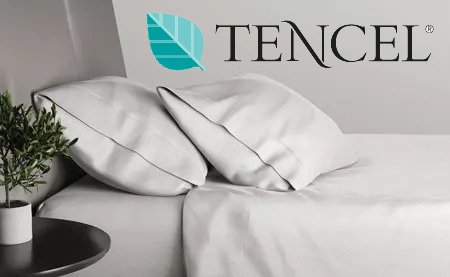
The well-known brand “Tencel ®” is for fabric made from eucalyptus tree wood pulp. It’s durable and naturally antimicrobial. The material gives a cool feeling to the touch and wicks away moisture but is less breathable than cotton. The great part of the eucalyptus bedsheet is that it is considered an eco-friendly product as its production consumes a fraction of water and the energy the cotton requires.
Bamboo & Modal
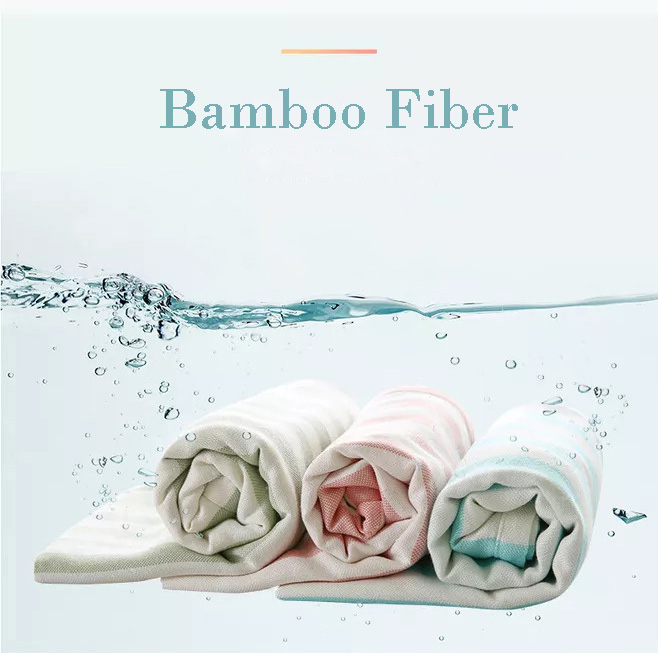
Bamboo essentially consists of rayon. It is a regenerated cellulosic fiber produced from bamboo. It is softer than cotton, with a texture similar to a blend of cashmere and silk. Its moisture absorbency is twice that of cotton. As bamboo fiber has natural anti-bacterial and deodorizing characteristics, it is vastly utilized in hygiene home textiles, such as mattresses, sanitary towels, table napkins, and bedding. The most controversial issue is that the processing of Bamboo fiber production has detrimental environmental damage due to the chemicals used, like caustic soda and carbon disulfide. Because of this negative impact, processors worldwide are revamping and re-regulating their practices, and there has been a great deal of improvement in chemical management and waste treatment.
Polyester (Satin)

Polyester is a synthetic fiber. The polyester fabric is soft, light-weighted, and wrinkle-resistant but unbreathable, and it snags easily. Polyester is extensively used in home furnishings. Polyester is prone to static build-up, so it is always blended with other stable fibers, such as cotton. Polycotton inherits the benefits of both fabrics and is far more breathable than 100% polyester. You always see that microfiber, nylon, and acrylic are all made from polyester.
The Most Popular Weaves in Bed Sheet
There are three woven types of woven products: Plain, Twill, and Satin. Weaves create texture and make the fabric look more draped and versatile. In bedsheets, the most popular weaves you always see in the market are :
Jersey Knit bed sheet
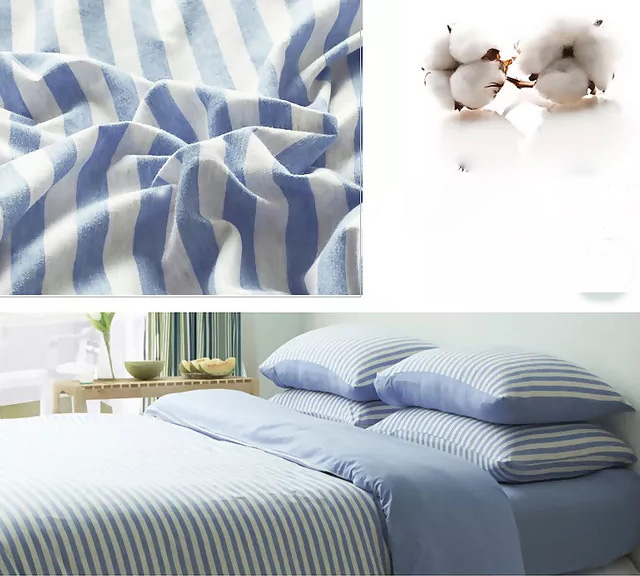
Jersey refers to sheets made from cotton fabric that is knit rather than woven. It is made from one continuous piece of yarn looped over itself. This process resolves the sheet with a natural elasticity without using stretch fibers like elastane. Cotton jersey is essentially the same fabric used in cotton T-shirts. Thus it is soft and wrinkles resistant and ideal for children’s bedding. Jersey is not as durable as other weaves.
Flannel bed sheet
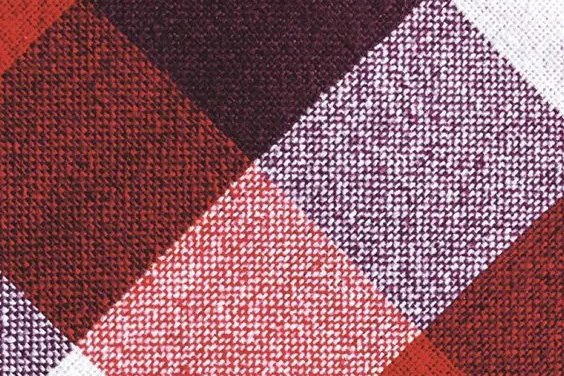
Flannel is a fabric that is commonly made from cotton. It features a nap, or fuzzy finish on one or both sides, coming from brushing or from its typical loosely spun weave. Its snuggly-warm quality makes it best for the winter bedsheet. It always appears in the plaid tartan design. Worth mentioning that flannel quality is measured in ounces per square yard rather than by thread count.
Percale bed sheet
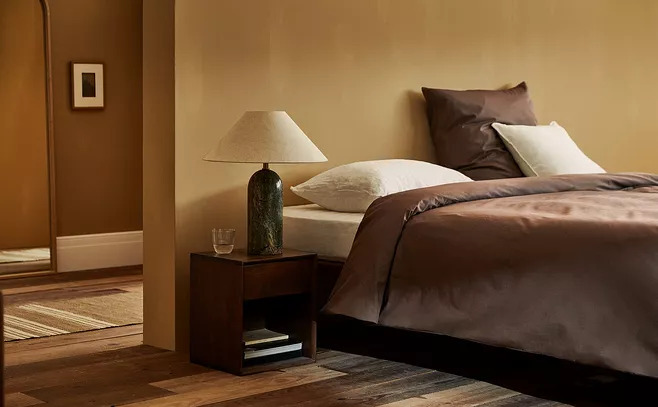
Percale is the strongest weave, often used for bed covers. Percale yields a cooler sheet and is ideal for hot sleepers. For the bedsheet, it should go for a thread count above 200. Egyptian cotton sheets with a percale weaving style are the most durable bedding material.
Sateen
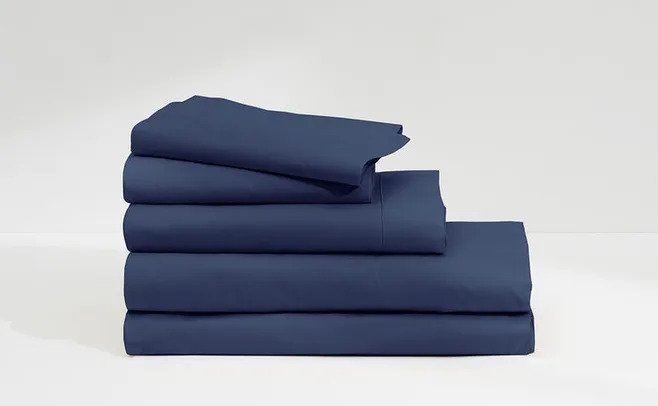
A Sateen weave is woven on a Jacquard loom, which could create intricate patterns on the fabric. Sateen sheets are 100% cotton sheets with a high thread count. Typically sateen weaving has a smoother touch and drape. Because the long cotton fibers are mercerized during treatment, sateen fabric is more durable than untreated cotton. Sateen bed sheets could achieve high thread counts as high as 1020.
Twill

Twill fabrics are woven with a pattern of diagonal parallel ribs. Twill weave is very popular for sheets, bedding, and towels because it is durable, wrinkle-resistant, and drapes well. Some people may feel the ribbed pattern is a bit tough.
Are You an Eco-Friendly Shopper?
Today, both manufacturers and consumers are looking for more environmentally sustainable products. While valuing the users’ experiences, many people look to the production process. In the bedding industry, eco-friendly products are becoming sought-after. The scrutinization of conventional natural materials is extended into chemical agents and waste treatment applied during manufacturing. The live sample is bamboo fabrics, a natural fiber extracted from the bamboo stem and leaves. The material enjoys a good reputation —breathable, washable, and moisture-wicking. However, The chemicals used in this process, like caustic soda and carbon disulfide, are highly toxic and risk human health. About 50% of hazardous waste from rayon production (including the bamboo variety) cannot be recaptured and reused. The fabric brings a comfortable feel and could wreak havoc on the environment. The good news is that manufacturers are revamping their practices to reduce the damage to habitats under the pressure of increasing consumer awareness.
Conclusion
There is no 100% perfect sheet that could completely address your concern. Knowing the fabric’s strengths and weaknesses will help you sort out the long list. Comfortable bedding is essential to a quality life. It would be best to have various bed sheets according to the season, your physical condition, and your home decór style.

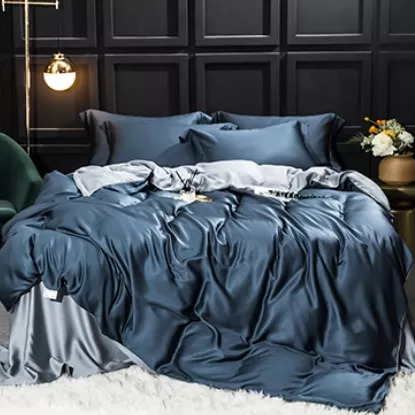



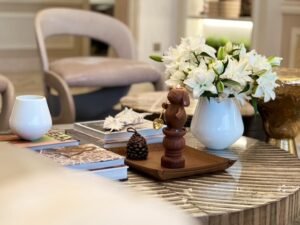
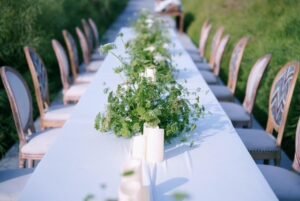

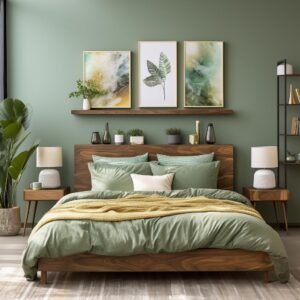
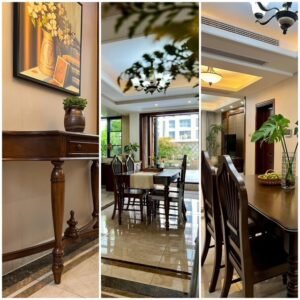
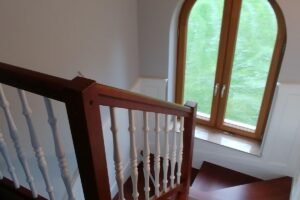

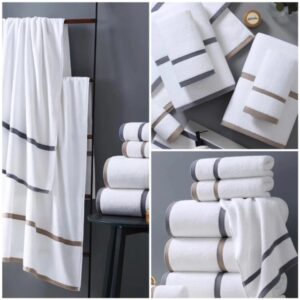
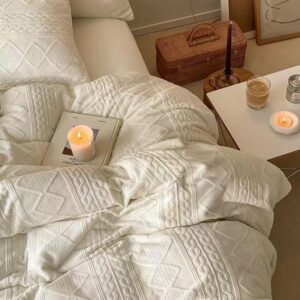
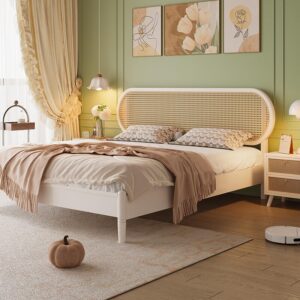
2 thoughts on “The Truth About Bed Sheet”
I’m not sure exactly why but this web site is loading very slow for me. Is anyone else having this issue or is it a issue on my end? I’ll check back later and see if the problem still exists.
Hello There. I found your blog the usage of msn. This is a very well written article. I will make sure to bookmark it and come back to learn more of your helpful info. Thank you for the post. I’ll certainly return.